Chapter 4: Economy, Tourism, Education and Retail
| Strategic Objectives |
|---|
|
To assist and ensure that:
|
| To provide opportunities which encourage sustainable low carbon and resilient economic growth, innovation, and commercial activity and create opportunities for new economic growth and employment, in both urban and rural areas that are both appropriate for, and attractive to, the needs of different industries, while at the same time identifying, coordinating and improving the provision of infrastructure necessary to allow Waterford City and County to grow and prosper over the long term. |
| To develop, deliver and promote Waterford as a year-round world class tourism destination, with authentic, memorable experiences which attracts local, regional, national and international visitors generating long term and lasting benefits to enhance and support local communities and realise additional economic growth, jobs and prosperity for the people of Waterford. |
| To develop and market Waterford as a ‘UNESCO Learning City’, and to provide the necessary infrastructure, education and employment opportunities, complete with a university of significance, and associated accommodation, amenities and the quality of life to enable Waterford to compete at a national and international level as a modern European city of scale and significance. Key elements to this will be 'talent retention and talent attraction' with the South East Technological University, headquartered in Waterford City, playing an active part in creating the kinds of educational and employment opportunities required to support this Objective. |
| To ensure that Waterford City asserts itself as the primary retail and commercial destination of the South East Region through the meaningful redevelopment of key sites within the City Centre and the strategic development of the North Quays. |
4.0 Introduction
Our vision is to support a strong, sustainable, resilient and successful economy, underpinned by tourism, enterprise, innovation and skills, and access to quality education for all.
This will be facilitated by creating places that can foster enterprise and innovation, and attract investment and talent, and can be achieved by building regional economic drivers for Waterford as listed in the RSES and by supporting opportunities to diversify and strengthen the economy/circular economy, to leverage the potential of places.
Access for all to a range of quality education facilities is a defining characteristic of attractive, successful and competitive places. There is an acknowledged link between educational attainment and quality of life. Education is positively related to economic growth, with greater levels of attainment giving access to wider sections of the labour market; and education reduces the risk of social exclusion and poverty, and encourages social participation. We will achieve this by supporting the growth and development of all learning institutions and promoting and fostering links with business/ enterprise and technological innovation. The development and enhancement of Lifelong Learning and Healthy City initiatives in Waterford will be essential components of achieving UNESCO Learning City/ Region status. The Development Plan will also support the development of the Learning City/ Region initiative to other urban and rural centres of population through existing networks (e.g., the Library Service), and support the preparation and implementation of a Learning Region Strategy.
The Council supports the transition of WIT to South East Technological University (SETU), headquartered in Waterford City, this development will act as a key enabler to transform Waterford into the South-East Regional Capital and into a modern European University City. The new university will engage in a wide variety of activities, its contribution to the city and county will be far reaching and will involve the following:
-
a scaling up of higher education provision
- to increase the level of educational attainment amongst the regional population,
- to address the outward migration of talent from the region, and
- to increase the flow of students and others into the region.
-
the deepening of impact on regional society and the economy through increased high-quality research and innovation activity
- increasing the knowledge capital of the region through enhancing the excellence of the research from within the academy,
- focusing the application of that knowledge to drive the social and economic development of the region in domains of regional specialism and high impact,
- as well as providing high-end, high-impact, well-paid employment opportunities for graduates, post-graduates, researchers and technical professionals.
Employment and economic growth play a vital role in the planning system in delivering sustainable goals for the public good, improving the social and economic prospects of all residents, and the economic health and resilience of our city and county. Waterford must be “open for business” to become a successful, resilient and sustainable place, meeting the many different and changing needs and location requirements of the different sectors and sizes of business. Such an outlook also requires a concentrated, co-ordinated and collaborative cross-sectoral and cross-departmental approach, which seeks to deliver initiatives in a targeted manner and with a strategic focus.
A proactive and active land management process, with strategically located land banks (brownfield and greenfield), is key to facilitate economic growth and development. To promote a diverse and resilient economy we will have to build on our existing assets (natural, cultural, and built environment), and put into practice new ideas from our colleges, research organisations, and our skilled workforce. We also need to improve our connections through upgrades to our transport and high-speed digital communications networks and play a more proactive role towards a low carbon economy.
In respect of the key broad functions and core elements which the Development Plan can support in relation to economic development, these include:
- Setting out a planning framework for economic development that is in line with the plan hierarchy, settlement hierarchy and Development Plan Core Strategy and supports communities across Waterford.
- Ensuring an adequate supply of zoned and serviced land for economic and employment-generating uses and growth at appropriate locations.
- Developing a strategy for retail and tourism/ leisure.
- Promoting and facilitating an improvement in the quality of life in all parts of the City and County.
- Supporting the provision of education facilities and the knowledge economy in order to assist in fostering a culture of innovation, lifelong learning and life skills.
- Facilitating and supporting entrepreneurial activity and clustering opportunities.
- Supporting sustainable employment growth around Waterford’s natural resources.
- Supporting key sectors for growth, including those at strategic transport/ access locations.
- Provide a consistent approach to economic development that in turn generates certainty and clarity for applicants, developers and investors involved in the development process; and,
- Provision of a framework of development management standards to promote best practice implementation of development in order to ensure and contribute towards a sustainable and high-quality environment.
Our approach to assisting in delivering balanced economic growth and development is underpinned by four priorities:
- Investing in our people and our infrastructure in a sustainable way.
- Fostering a culture of innovation, research and development.
- Promoting inclusive growth and creating opportunity through local and regional cohesion; and,
- Promoting integrated connectivity to boost our collaborations, trade and investment, health and wellbeing.
4.1 Context
In terms of locations of employment, the CSO’s POWSCAR data offers a valuable insight. Figure 4.1 below provides a visual indication on the major areas of employment. The map details the number of local jobs within the Waterford Electoral Divisions (EDs). In total, there are 44,901 persons resident in Waterford who are at work. Of these, 38,423 jobs are located within Waterford, with 71% (27,345 being located in Waterford City (based on location of job via POWCAR, 2016).

Figure 4.1 Location of Jobs in Waterford
This shows the significance of the MASP area, Waterford City and indeed Dungarvan as the main employment centres in Waterford. Darker shaded areas are those where there is a higher proportion of persons employed, relative to residents. Workplace zones in, or adjacent to, larger settlements show higher concentrations of employees. However, there are several rural workplace zones that also record high proportions of workers.
Waterford’s economy has traditionally depended on strong agricultural and manufacturing sectors, with retail also comprising a major contributor to the City’s economy. The 2016 census demonstrated that the economic baseline has expanded, and the Waterford economy is well supported in:
- manufacturing (16.3%).
- commerce and trade (20.9%); and,
- professional services (25.3%).
Employment opportunities thus cover a broad-spectrum including Biotechnology, ICT and engineering, manufacturing and processing, professional services, tourism and hospitality, and local services. Economic sectors are likely to continue to be restructured. This is likely to include further broadening and addition of higher value-added activities in the pharmaceutical, life science, engineering, international business services sectors, as well as tourism.
Agriculture in Waterford also supports thousands of jobs in the rural economy, both directly in food and drink processing and also in the wider agri-industry.
4.2 Location
Generally, new employment generating enterprises will be encouraged to base themselves in the city or existing towns, villages and settlement nodes, in support of the Development Plan Core and Settlement strategies, and in proximity to existing infrastructure, services and concentrations of employment. As such, policies relating to economic development and shaping our businesses, echo the key economic principles of the Southern Region’s RSES[1].
4.3 Strategic Employment Development/ Growth Areas
Projects and strategic employment areas identified through the NSOs and RSOs (included in Table 4.1), are regarded as key growth enablers for the City and County. They are also central to achieving sustainable economic and employment development, resilience, and growth. This will enhance and support our quality of life, together with the integrated provision of enabling infrastructure and utilities generally, including that of green/ blue infrastructure and improved public infrastructure and services.
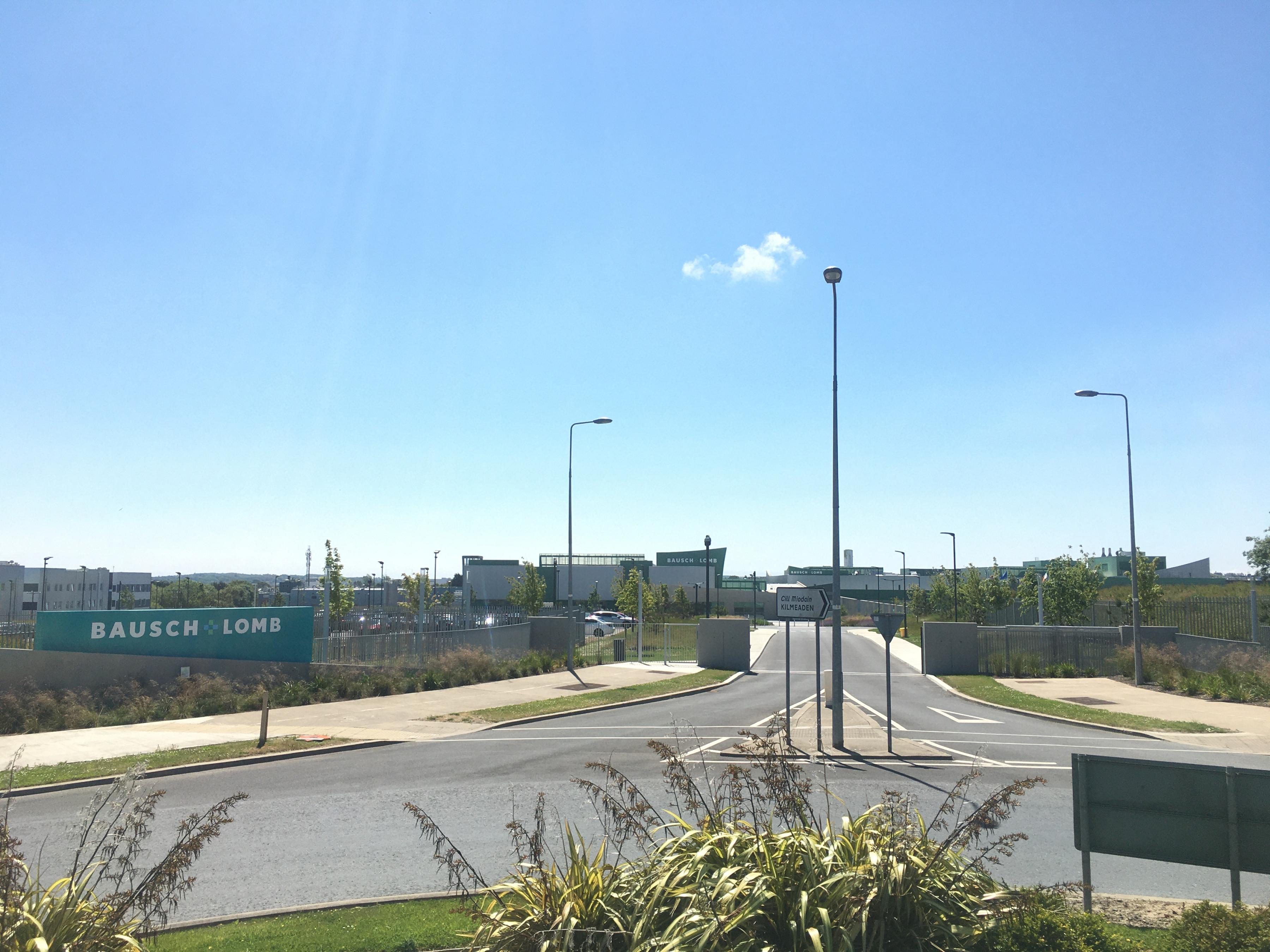
4.4 Networks, Clustering, Innovation/Enterprise Hubs and Social Enterprise
In addition to the active land management of economic sectors, the council aims to support and facilitate clustering/ innovation hub initiatives within and across sectors. Strengthening and developing clustering or innovation hub potentials (e.g. engineering, food, circular economy, creative industries, e-commerce, crafts, and tourism) will further attract and embed foreign owned companies and stimulate the growth and start-up of more innovative Irish owned enterprises.
Within the urban context, Waterford has existing clusters/ innovation hubs, including life sciences, communications technology, and manufacturing, centred around and supported by a number of high-quality research centres. These include TQS in Lismore, the Telecommunications, Software and Systems Group (TSSG), the Pharmaceutical and Molecular Biotechnology Research Centre (PMBRC), Crystal Valley Tech and the South Eastern Applied Materials Research Centre (SEAM), as well as the ArcLab Research and Innovation Centre which is a focus for tech start-ups, and RIKON, a centre of Innovation in Business Technology Management, all with links to SETU. A number of these also support the wider city region. The Council will support the construction, and enhancement, of an extensive city and county-wide innovation network that will link all enterprise centres and related facilities through the SETU ArcLabs Innovation centre into one powerful ecosystem with significant resources, access to high quality research, business support, and other infrastructure.
In addition to the above, clustering initiatives in the rural context, with communities working together, have resulted in the identification of a number of distinctive strategic areas within geographic clusters forming rural economic development zones[2] within their respective areas as per Table 4.1.
Such initiatives assist in providing a network and connected nodes of support for start-up business, learning, and co-operative initiatives throughout the city and county, and the Council will continue to assist in facilitating and supporting the provision of facilities which will support and strengthening these.
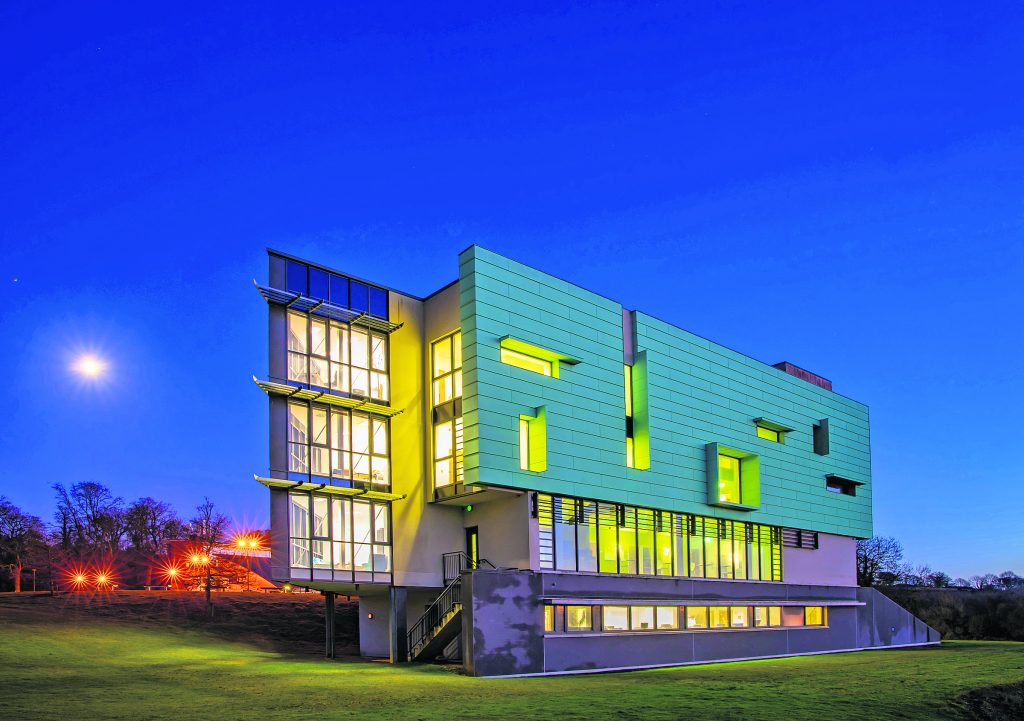
It is recognised that important symbiotic relationships exist between settlements/areas which advance enterprise and innovation at both a sub-regional and local level. Settlements and areas can share similar economic strengths and specialism’s, which combined, provide strategic opportunities to drive the regional economy, contributing to and interacting with the larger centres of growth such as key towns and metropolitan areas. These networks present opportunities for collaborative projects and shared benefits from strategic infrastructure investments, particularly from improved inter-regional connectivity (transport networks and digital communications) perspective.
Regional Policy Objectives RPO 28 – Collaboration/partnership, RPO 29 – Rural Settlement networks and RPO 30 – Inter-Urban Networks as Regional Drivers of Collaboration and Growth recognise the important role of the development plan in fostering and supporting collaborative partnerships. The RSES also identifies the following potential networks which are supported through the policy objectives of the Development Plan:
- Limerick – Waterford Transport and Economic Network: This potential network along a strategic east-west axis across the region links the cities and MASP areas of Limerick and Waterford and the Atlantic Economic Corridor and Eastern Corridor along with the Key Town of Clonmel and the towns of Carrick-on-Suir, Cahir and Tipperary. Early initiatives along this axis include the River Suir Blueway.
- Waterford-Kilkenny-Carlow-Dublin M9/Rail Network: A potential inter-regional network and opportunity for economic collaboration connecting the Waterford Metropolitan Area and Key Towns of Carlow and Kilkenny City on a strategic road and rail corridor linking the region to the Dublin Metropolitan Area and Eastern and Midland Region.
- Cork, Limerick-Shannon and Waterford Metropolitan Area Network.
- Cork to Waterford Transport and Economic Network including the River Blackwater Blueway and inter-county Greenway network.
- Eastern Corridor (Dublin Belfast Economic Corridor extending to Rosslare Europort including Gorey-Enniscorthy- Wexford & strong connectivity to New Ross, Waterford/Belview Port)).
Waterford City and County Council supports partnership and collaboration and the delivery of sub – regional, inter-urban and local networks which enhance the sustainability and resilience of communities in Waterford and across the broader region, while also supporting improved intra-regional connectivity between networked settlements by means of public transport, rail, inter-urban walking and cycling routes, greenways and e-mobility initiatives. Opportunities for networks and clusters are identified in Table 4.1 while transport connectivity is considered further in Chapter 5.
Social Enterprise is considered to be critical to the continuing improvement in welfare and living standards of people living in rural and urban communities in Waterford and will continue to be supported by the Council. It acts on enterprise, employment, second chance education, climate action, security, mental and physical health, transport, childcare and elderly care, performing arts, sport and recreation, social and economic inclusion, community services, infrastructure, facilities and all types of people and infrastructural programs.
|
Table 4.1 Strategic Employment Locations |
|
|---|---|
|
Employment Opportunities |
Strategic Development Areas |
|
Increased densities and brownfield regeneration in existing built-up areas |
|
|
Employment and retail hubs in accessible locations to complement city/ town centre |
|
|
Commercial and research synergies in proximity to hubs such as a University/ Hospital/ Airport/ Port |
|
|
Strategic regional and rural enterprise sites for campus-style/ space intensive uses to strengthen local employment base |
|
|
Sub-Regional, Inter-Urban, Urban and Rural Networks and clustering synergies to leverage ‘connectedness’ and collective and collaborative efforts |
|
|
Economic Policy Objectives |
|
|---|---|
|
ECON 01 |
We will support and facilitate regeneration, consolidation and growth at strategic employment and nodal locations along strategic public transport corridors, and maximise commercial and employment development opportunities so as to foster more sustainable economic growth, diversity and resilience in accordance with the Core and Settlement Strategies by:
|
|
ECON 02 |
Strategic Employment Locations To support significant employment growth and development at strategic employment locations as identified within the Waterford MASP, Waterford Airport, The Port of Waterford, Dungarvan Key Town, Tramore and Kilmeaden, having regard to service availability, accessibility by sustainable transport modes, place-making for business, and the built and environmental context. We will also promote and facilitate employment in all our settlements where investment can be focused on:
|
|
ECON 03 |
Planning for Appropriate Economic Growth To encourage, promote and facilitate economic and employment growth, resilience, diversity, social enterprise and the regeneration of underutilised areas. Development proposals will be supported which demonstrate that:
Note: For further details of the Council’s partnerships with private and public sector organisations to regenerate the city and county’s economy and employment, refer to the Waterford Cultural Quarter (WCQ) Strategy and other relevant strategies, e.g. The Rural Waterford Visitor Experience Development Plan; Waterford LEADER Local Development Strategy (LDS). For details of the MASP proposed public transport, cycle and pedestrian infrastructure, refer to the Chapter 3, 5 and Volume 2 Development Management Standards of this Development Plan. |
|
ECON 04 |
City and Town Centre First Approach We will support national policy as stated in Town Centre First: A Policy Approach for Irish Towns (DHLG&H/ DRCD) 2022 across Waterford City and County. When considering advancing local authority initiatives, and submitted development proposals, we will adopt a city and town and city centre first approach in a manner consistent with the principles of compact growth and mixed-use development, as committed to in ‘Town Centre First’. We will support and enable vibrant and viable centres to accommodate a diverse range of commercial, community, heritage, riverside/ marine, amenity and residential uses to ensure they fulfil their role in supporting sustainable communities. Where proposals are not appropriate to, or cannot be accommodated in a settlement centre, we will adopt a sequential approach to identify the most appropriate location in line with the policies and development management standards of the Development Plan. To this end, the Council will promote, facilitate, and undertake works and initiatives aimed at:
|
|
ECON 05 |
Collaboration We will continue to actively undertake a leadership role to progress and secure the economic strategy and policy objectives of the NPF and RSES/MASP, the South-East Regional Enterprise Plan, South East Regional Skills Forum, the Local Economic and Community Plan (or any subsequent revisions of these) and the Development Plan and its Core and Settlement Strategies. In providing this leadership role, the Council will foster a whole of local government collaborative approach to proactively, engage with communities, stakeholders, sectoral interests and adjoining authorities to achieve collective support and successful implementation of the Development Plan, in line with the policies and objectives set out in national, regional and local strategies. |
|
ECON 06 |
Regeneration We will facilitate and participate in regeneration projects so as to revitalise under-utilised business parks and industrial estates and promote the regeneration of obsolete and/or under-utilised buildings and lands that could yield economic benefits and/or social enterprise, with appropriate uses, subject to compliance with the policies and development management standards of the Development Plan. |
|
ECON 07 |
Active Land Management To carry out the functions of the local authority in a co-ordinated manner in order to assist in the proactive targeting of underutilised, vacant and derelict lands and buildings, and general building stock, in pursuing the achievement of the policy objectives of this Development Plan), and in order to facilitate an Active Land Management approach to the sustainable growth and development of Waterford City and County. This will be achieved/ assisted by:
|
|
ECON 08 |
Creative Industries To work in conjunction with the Waterford Local Enterprise Office (LEO), LEADER and all relevant stakeholders to support and deliver the further development and expansion of new workspace for SMEs, the creative industries, film industry, artists, and the fashion and craft industries in Waterford, and particularly in new commercial and mixed-use developments, or where underutilised buildings are being brought back into use. Larger-scale commercial development proposals should consider the scope to incorporate a range of sizes of business units, including for SMEs. Flexible workspace can include a variety of types of space including serviced offices, co-working space and hybrid industrial space. What constitutes a reasonable proportion of workspace suitable for SMEs should be determined on the circumstances of each case, and strategies in place (such as the Waterford Cultural Quarter (WCQ) in the Viking Triangle Area of Waterford City). |
|
ECON 09 |
Fostering and Supporting Economic Collaborative Partnerships We recognise and support collaborative economic partnerships at a local, sub – regional and inter – urban scale and recognise its capacity to act as a multiplier delivering growth of scale. We will work with project proponents, neighbouring local authorities, state agencies and statutory providers to build and enhance our networks, our shared assets and specialism and identify and support strategic opportunities particularly through the provision of sustainable and shared infrastructure. |
4.5 Waterford Regional Airport
At a national level, as we are a peripheral country in Europe, air transport is essential for trade, inward investment and tourism. The UK’s exit from the EU in 2019 highlights the importance of NSO 6 (High Quality International Connectivity) and the importance of continuing investment to further improve the quality of airport and port[3] facilities, given their role in maintaining transportation linkages with crucial EU markets. The requirements for increased connectivity, to proactively develop aviation enterprise and to maximise the aviation sector’s contribution to the economy have also been identified in national policy[4] which “recognises the important role that regional airports play in their areas and in regional development”.
In the context of the RSES, the return of scheduled passenger services to Waterford Airport and associated investment infrastructure is highlighted as one of the key elements in making the Waterford Metropolitan Area a successful enterprising economic engine thriving metropolitan and regional enterprise growth. Waterford Regional Airport has a central role to play in supporting and increasing the economic development, tourism and critical mass of Waterford, and in improving the connectivity of the South East Region. A Masterplan for the Airport and the Airport Business Park is included at Appendix 12.
|
Airport Policy Objective |
|
|---|---|
|
ECON 10 |
Waterford Airport In line with EU national and regional policy support in respect of air access from regional airports, we will, where it would contribute towards the proper planning and sustainable development of Waterford and comply with all environmental legislation and policies and objectives contained within this Plan and higher level planning documents, including the National Planning Framework and Southern Regional Spatial and Economic Strategy
|
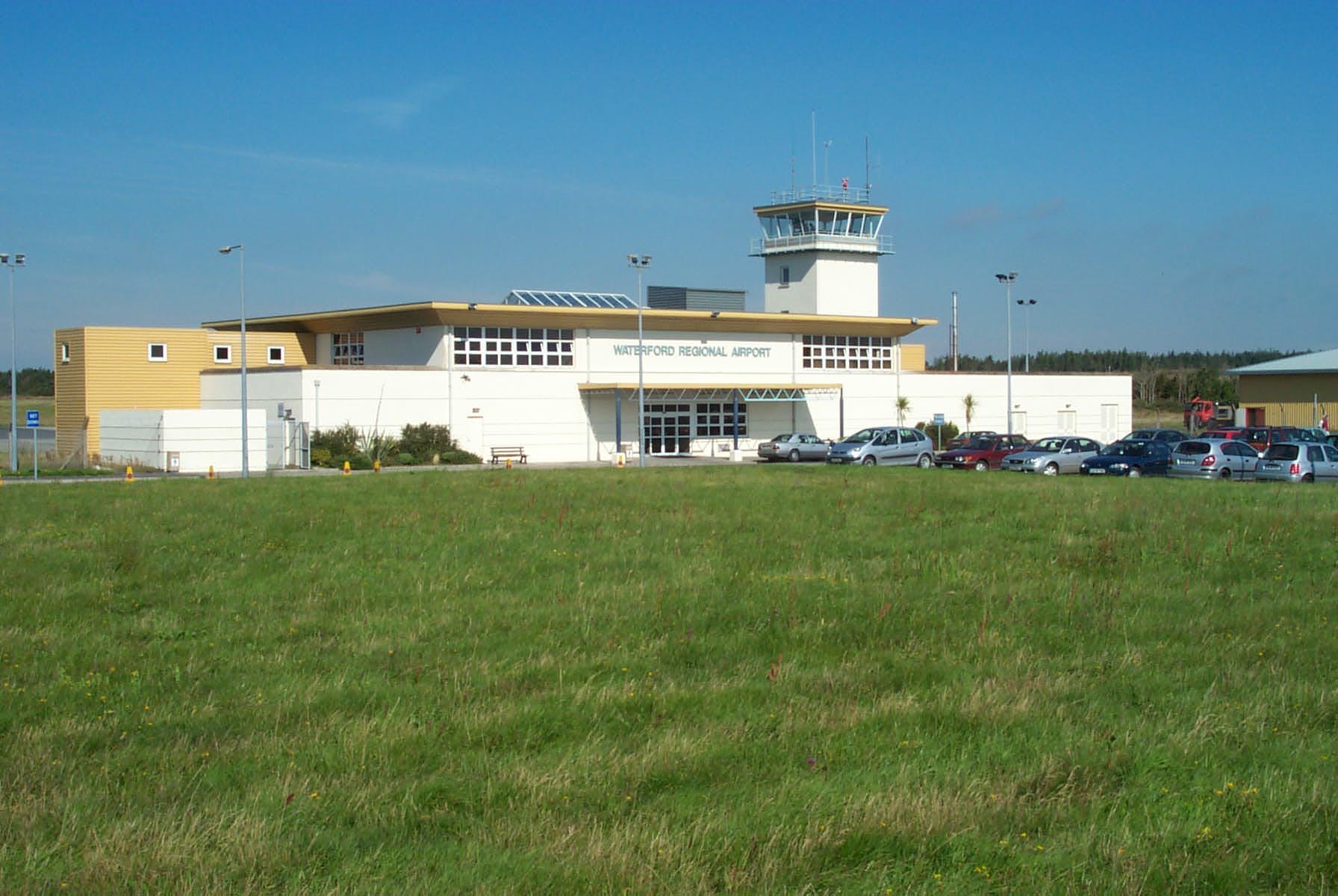
4.6 The Port of Waterford
The Port of Waterford is Ireland’s closest multi-modal port to Continental Europe with significant capacity for growth. A Port of National Significance (Tier 2) and a Comprehensive Port on the Ten-T Network, it currently handles 1 million tonnes of bulk product (primarily Agri-Related) and 100,000 tonnes of break bulk (timber, steel). The Port of Waterford Master Plan provides a framework to provide for future infrastructure investment requirements for enhanced capacity, which includes quay extensions, widening and deepening of shipping channels and installation of walling to reduce requirements for dredging, deeper berths at quays, and a larger turning basin.
The RSES supports development of freight rail services and facilities at the Region’s ports. For the Port of Waterford, this will require improvements to the Waterford to Limerick rail line as a key strategic freight corridor to build the Region’s international connectivity. For the Port to function effectively for the State and support modal shift freight rail as part of wider climate action programmes, effective financial incentives should be provided. The Port has a significant industrial hinterland including the IDA’s 55 ha Strategic Industrial land bank and the port has identified the need for further additional land and facilities to support port activity in the Master Plan.
|
Port Policy Objective |
|
|---|---|
|
ECON 11 |
The Port of Waterford Waterford City and County Council will (in conjunction with Kilkenny County Council) support the development of the necessary port infrastructure and associated road and rail connectivity required to support the development of the Port of Waterford Belview and to support the role of the Port as an Economic Driver for the South-East. |

4.7 Rural and Marine Economy
Achieving real and sustainable competitive advantage, diversity and resilience in our rural areas and economy, based largely around our local assets (i.e. community, geography; distinctiveness of character), and connectedness between the rural towns and villages and within clusters, is key to realising and boosting individual and collective innovation, diversity, efficiency and prosperity in the rural economy.
The rural economic strategy of the Council is aimed at providing our rural areas with the necessary support, tools, and financing mechanisms (where available), to develop and execute an effective strategy for the individual rural areas and clusters. One of the ways in which the Council is seeking to support this, is through the formulation of a Waterford Rural Visitor Experience Development Plan (VEDP). The VEDP is intended to complement the work of ‘Visit Waterford’ in promoting Waterford as a destination and create and promote coherent rural visitor experiences throughout our County, based around our distinct rural clusters and their distinctive and unique collective offerings.
The Council acknowledges that the development of rural enterprise and employment opportunities are vital to sustaining the rural economy and will continue its support of the sector through appropriate policy formulation and support for rural based enterprises and supporting infrastructure, including digital infrastructure. In accordance with the economic strategy for Waterford, appropriately scaled enterprises should be directed to small towns, villages and business/ industrial zoned lands in Waterford City and our larger towns, in accordance with the core and settlement strategies.
Agriculture, horticulture, forestry, tourism, aggregates, renewable energy production and rural resource-based enterprise will also be facilitated, as will appropriate on-farm agricultural diversification[5]. The Council recognises a balance between rural development, including diversification and protection of the rural environment, requires careful management. The Council will also support micro-enterprises and cottage style industries in rural areas, where they do not detract from the rural character of the area, or have a negative effect on the surrounding environment or land uses.
The Council recognises that with appropriate care in initial site selection, process design and environmental monitoring, mineral extraction can be compatible with a wide range of appropriate adjacent land uses and habitats. Figure 4.2 identifies the location of significant aggregates across Waterford derived from the Geological Survey of Ireland aggregate potential mapping and exploration records. All new applications for quarries will be assessed having regard to DoEHLG Guidelines such as the “Quarries and Ancillary Activities, 2004” and Development Management DM 35, Volume 2 of the Development Plan.
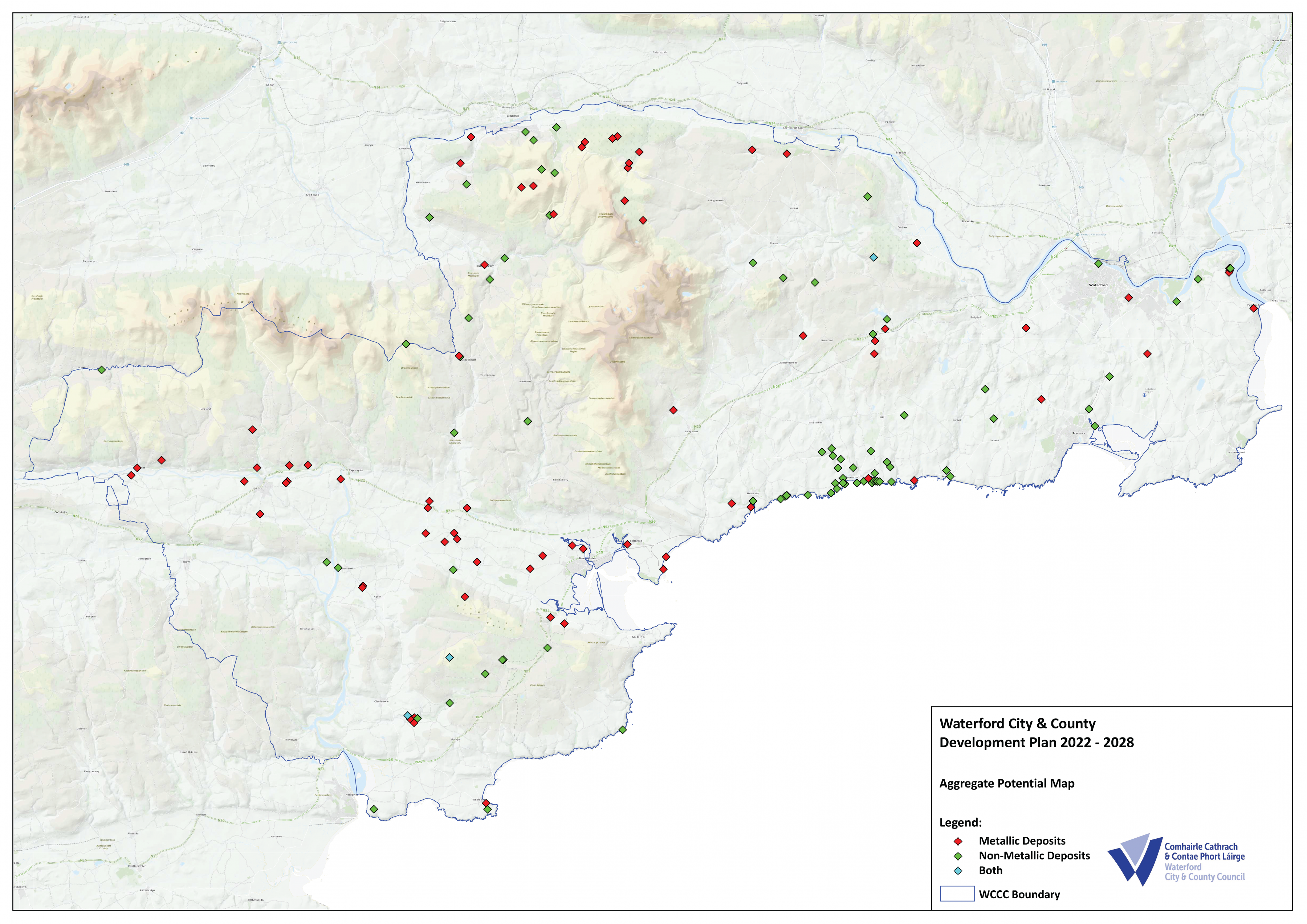
Figure 4. 2 Aggregate Potential Map
It is also important that opportunities are afforded and maximised, where appropriate, for home-based working. Home working can contribute significantly to a local economy, and the general sustainability of local areas, as such working arrangements can benefit individuals, families and the local community in addition to contributing to more sustainable land use patterns by reducing the need for commuting.
Advancements in technology mean that there is more scope for residents to work from home, either in a purpose built live-work unit, or by utilising an area in an existing dwelling. By supporting small-scale economic activity and an entrepreneurial culture, there is potential for some of these businesses to expand and take up conventional, larger business premises in our rural settlements, towns and villages, and contribute to the growth of the rural economy.
In relation to our marine economy, the Port of Waterford is regarded as a main port for passenger and cruise ship visits, with potential for expansion. There are also strong location, functional, economic, social and administrative links between Belview Port and Port of Waterford. The future development of Rosslare Port and the Port of Waterford and various interrelated and integrated sectoral linkages, places increased demands on the existing transport road and rail) network, in particular the road network, with the potential for large freight transport. The need for improved accessibility and associated additional investment to achieve this is recognised, and the Council will support and promote the critical need and implementation of such infrastructure.
Marine and river-based fisheries support and sustain small coastal and rural communities across the County, and active fishery harbours in Waterford are located in Dunmore East, Dungarvan, Heilbhic (Helvick), Passage East and Tramore. Dunmore East (a National Fishery Harbour Centre) is particularly noteworthy as a primary landing port and main fishing harbour with regard to economic turnover and landing, whilst the Gaeltacht is a significant contributor to the national aquaculture industry.
|
Rural and Marine Policy Objectives |
|
|---|---|
|
ECON 12 |
Rural Economy To support and facilitate the provision of enabling infrastructure and utilities in our smaller towns and villages so as to cater for appropriate and sustainable economic growth and development. Commercial development proposed within settlements should be at a scale which is appropriate to the settlement function as identified in the Settlement Hierarchy. Development proposals should be compliant with the policies and development management standards of this Development Plan and should underpin the proper planning and sustainable development of the area. |
|
ECON 13 |
Rural Resources To facilitate farm or rural resource related enterprises and diversification, including food production and processing on farm/ agricultural holdings, mineral and aggregate extractive industry, aquaculture and marine, the circular economy, and proposals which support rural tourism initiatives which are developed upon rural enterprise, social enterprise, natural/ cultural heritage assets and outdoor recreational activities, subject to the capacity of the site and the location to facilitate the proposal. Subject to environmental policies and the development management standards of this Development Plan, the nature and scale of any proposed development will be assessed having regard to a number of factors, including nature and scale of the existing operation, building, or tourist attractions, source of material (where appropriate), traffic movements, water and wastewater requirements, capacity to reuse existing and redundant buildings, and likely impacts on amenity and the environment and the Natura 2000 Network. |
|
ECON 14 |
Local Workspaces To engage in local partnerships with stakeholders/ community groups, and social enterprise, together with other funding organisations, to assist in identifying, facilitating and promoting smart working locations and economic enterprise and growth/ regeneration, by encouraging and facilitating the provision (subject to funding availability), of local workspaces, small business units, new Enterprise Centres /Co-working hubs, and/ or grouped ‘units’ or spaces which can provide a multi-functionality of purpose and use, adding vitality and vibrancy to an area. Social enterprises running repair, reuse and recycling initiatives will also be encouraged where considered appropriate. |
|
ECON 15 |
An Gaeltacht To support the implementation of Plean Teanga na nDéise 2018 – 2024 in collaboration with Údarás na Gaeltachta, Comhlucht Forbartha an nDéise, and the broader community by:
|
|
ECON 16 |
Home-based Working To encourage and support the provision, where appropriate, of home-based economic activity[6] (i.e. ‘working from home’) including the provision of small-scale individual enterprises. Proposals for such development will be required to demonstrate the following:
|
|
ECON 17 |
Marine Development We will facilitate the sustainable growth and development of the aquaculture, fisheries and marine leisure sector, including in relation to improved water quality. The development of marinas, water sport based activities, improvement of harbours, quays and slipways, and enhanced interpretation and safety, should be considered as part of a broader strategy for these facilities to be carried out during the lifetime of the Development Plan and should be designed so as to avoid landscape/seascape or environmental/water quality degradation and adverse effects on designated sites in the area. |
|
ECON 18 |
Strategic Integrated Framework Plan for Waterford Estuary In collaboration with relevant local authorities, the Southern Regional Assembly, government departments and state agencies, and the SETU, and in order to support the implementation of Waterford MASP Policy Objective 21, during the life of the Development Plan we will prepare a Strategic Integrated Framework Plan for the sustainable development of Waterford Harbour, in order to harness the economic, tourism, cultural and recreational potential and protect the environmental and heritage qualities of the area for all users |
4.8 Climate Action and Jobs
The challenges to our society, biodiversity and economy resulting from climate change are significant and will require investment in innovative solutions to be developed and employed in order to decouple continued growth needed to deliver NPF and RSES targets from carbon emissions and build resilience across our communities and economic sectors. The RSES sets out a number of key policy objectives to develop sustainable economic pathways to achieve a reduction in our CO2 emissions with particular reference to electricity generation, the built environment, agriculture/forestry, transport and the circular bioeconomy. The Development Plan supports these policy objectives.
The economic consequences of climate change imply a strong call for action and mitigation across sectors. Fig 4.3 illustrates those areas which have been subject to economic losses from climate-related extremes during the period 1980-2017. Ireland is one of the more affected countries in Europe.
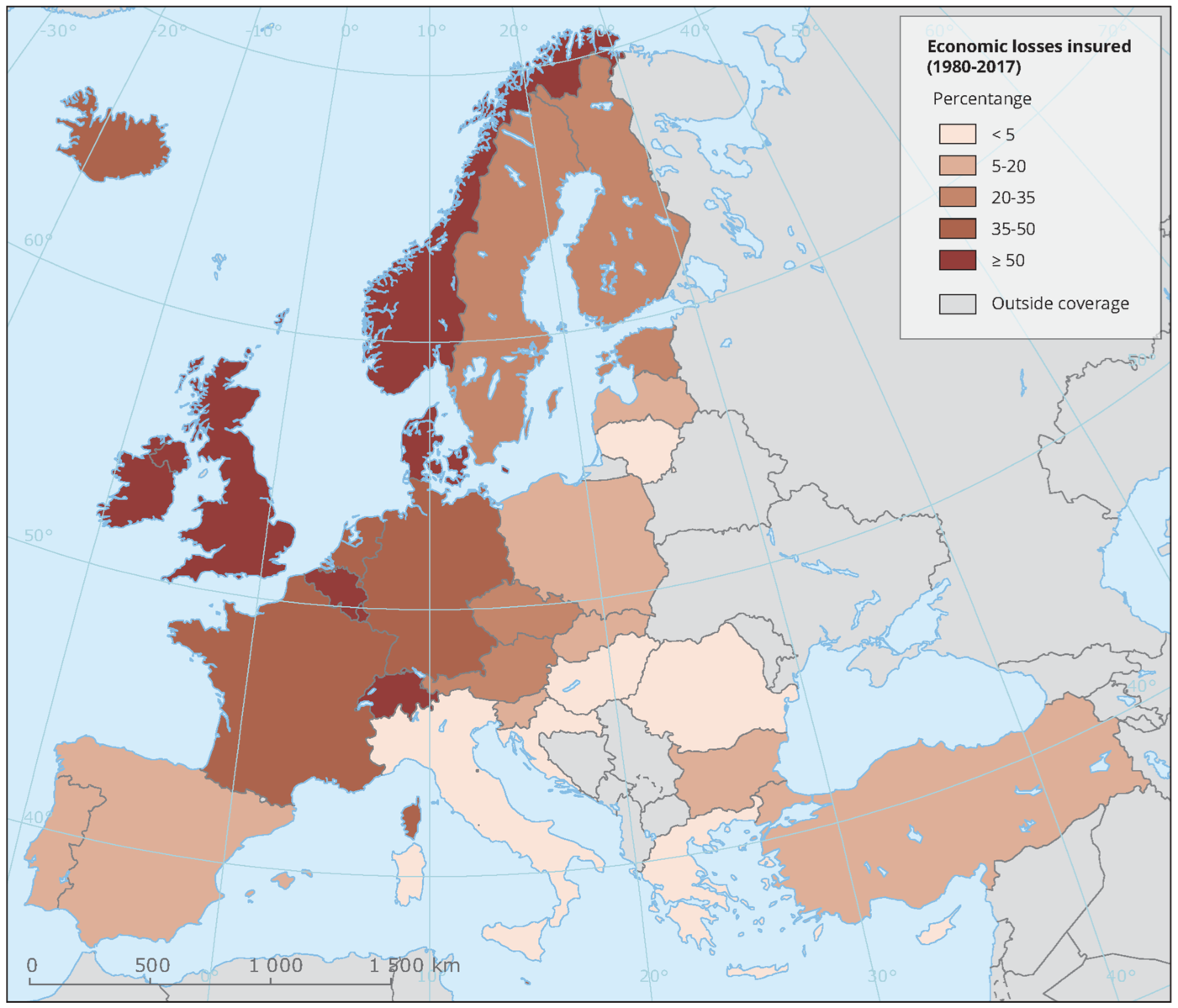
Figure 4. 3 Economic Losses due to Climate Change
Source: https://www.eea.europa.eu/data-and-maps/figures/economic-losses-insured-percentage-1
Climate change mitigation and adaptation can bring multiple benefits to the environment, society and the economy. Tackled together they open up new opportunities to promote sustainable local development including building inclusive, climate resilient and energy efficient communities, enhancing the quality of life, stimulating investment and innovation, boosting the local economy and creating jobs and reinforcing stakeholder engagement and cooperation.
|
Climate Action Policy Objectives |
|
|---|---|
|
ECON 19 |
Energy Efficiency We will support investments in energy efficiency of existing commercial and public building stock with a target of all public buildings and at least one-third of total commercial premises upgraded to BER Rating ‘B’. We will report annually on energy usage in all public buildings and will achieve a target of 33% improvement in energy efficiency in all buildings in accordance with the National Energy Efficiency Action Plan (NEEAP). |
|
ECON 20 |
Green Technology & the Just Transition to a Low Carbon Economy We will support the development of sustainable economic pathways to achieve a reduction in our CO2 emissions across all sectors and the development of low carbon and green tech businesses and industries throughout Waterford City and County. |
4.9 SEVESO Directive/ Major Accidents
The Seveso III Directive 2012/18/EU is an EU Directive to prevent major accidents involving dangerous substances and to limit the consequences of such accidents on people, property and the environment. It applies to establishments where dangerous substances are or may be present in specified threshold quantities. In Irish law, the current regulations through which the Directive is transposed is the Chemicals Act (Control of Major Accident Hazards involving Dangerous Substances) Regulations 2015; S.I. 209 of 2015.
Stafford’s Wholesale Ltd. T/A Stafford’s Bonded, Lockheed Avenue, Airport Business Park is a Designated Lower Tier Seveso III Establishment and Trans-stock Warehousing and Cold Storage Ltd., Christendom, Ferrybank, Co Waterford is a Designated Upper Tier Seveso III Establishment under the Directive, with regard to such sites, consultation distances are established within which there is an obligation to consult with the Health and Safety Authority and Waterford City and County Fire service, in respect of any development proposals.
Industrial developments coming within the ambit of the Seveso Directives shall be given special consideration and shall be controlled under the EU Control of Major Accident Hazards involving Dangerous Substances Regulations 2000. (Refer to Development Standards, Volume 2). Overall, the Development Plan supports the development of sustainable employment generating business and economic growth at appropriate locations and subject to relevant development management standards[7].
|
Major Accidents Policy Objective |
|
|---|---|
|
ECON 21 |
SEVESO III Sites We will take into account the provisions of the Major Accidents Directive, relating to the control of major accident hazards involving dangerous substances, and the recommendations of the Health and Safety Authority in the assessment of all planning applications located within the consultation distance of such sites. |
4.10 Sustainable Tourism
Sustainable Tourism is defined as ‘tourism that takes full account of its current and future economic social and environmental impacts, addressing the needs of visitors, the industry, the environment and host communities’.
Waterford is a destination that is rich in assets, with a historic city, picturesque towns and villages, beautiful mountains, tranquil countryside, stunning coastline, world class visitor attractions, a wide range of festivals, activities and accommodation options , as well as a vibrant food tourism and entertainment industry.
Waterford has a reputation as an urban/ coastal/rural/cultural/ heritage destination with a mix of attractions and activities that appeal to a wide variety of visitors. Waterford’s being ‘Ireland’s oldest city’ sits well within Fáilte Ireland’s branding Ireland’s Ancient East and is underpinned by the strong heritage and culture theme of the Waterford Viking Triangle, Waterford’s historic area. The unique combination of accessible city breaks with authentic heritage, coastal and rural outdoor activities and value for money has placed Waterford in a strong position to become one of the top visitor destinations in Ireland.
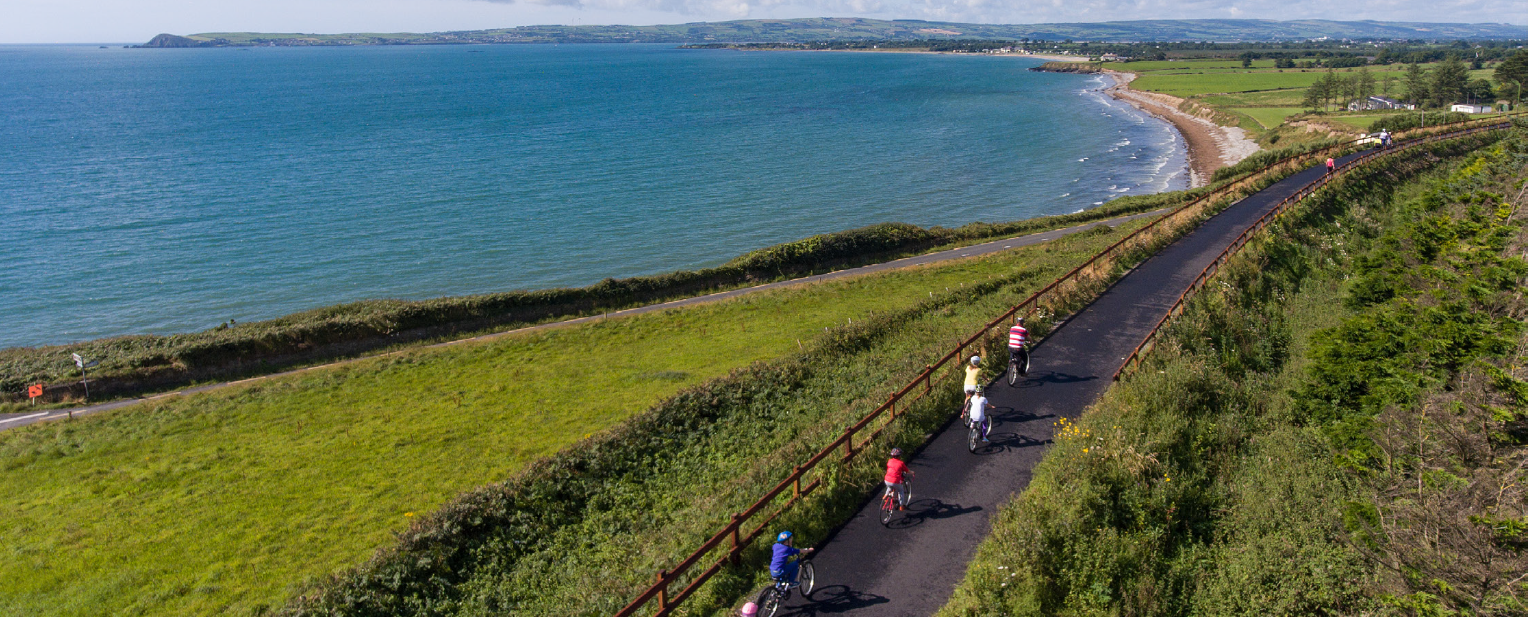
Tourism in Waterford has undergone a considerable transformation over the past ten years with significant investment in flagship tourism attractions, activity tourism and the establishment and support of high-quality festivals and events. The transformation came about as the result of several policy decisions and from the enormous effort by key organizations including Waterford City & County Council, Fáilte Ireland and key industry stakeholders who together initiated and/or supported tourism related developments that include, but are not limited to the following:
- The development of the Viking Triangle.
- The relocation of the global brand and visitor centre House of Waterford Crystal.
- The opening of five Waterford Treasures Museums: Medieval Museum, Bishop’s Palace, Reginald’s Tower; Irish Silver Museum and Irish Museum of Time
- The Waterford Greenway 46km off road cycling /walking trail.
- The development of Lismore Heritage Centre
- UNESCO Global Geopark status for the Copper Coast
- The development of 39 accredited recreational walking and cycling trails
- Investment in infrastructure and public realm; and,
- Investment in flagship festivals, including Winterval, Spraoi, Tall Ships, West Waterford Festival of Food, Waterford Harvest Festival, Blackwater Valley Opera Festival and Comeragh’s Wild.
Waterford is the main regional centre for the Southeast and has an environment that encourages entrepreneurship and investment. This factor, together with the upturn in the Irish economy, have in turn helped to stimulate private sector investment, with the potential of further tourism related developments to come, all of which combine to ensure that Waterford is now considered to be one of the fastest growing tourism destinations of choice in Ireland.
Valued at over 100 million Euros, Waterford’s tourism economy needs to keep growing in real terms to ensure Waterford, its businesses, communities and its resident’s benefit. While the tourism sector took a significant hit as a result of the Covid-19 pandemic, the rise in staycations will continue to add value to the Tourism Industry in County Waterford into the future. A successful, sustainable and accessible tourism industry will provide the backbone for Waterford as a desirable place in which to live, work, invest and to visit.
Tourism development must be balanced with the protection of the natural environment, a key attractor itself, and the people who live in these areas. Ongoing environmental management of amenities and managing visitor expectation is crucial to the promotion of sustainable tourism in the County.
Sustainable tourism facilities, when properly located and managed and particularly if they are easy to get to by a range of transport modes, will encourage longer visitor stays, help to extend the tourism season and add to the vitality of settlements throughout the year. In this regard, tourist accommodation facilities (hotels, B&Bs, Guest Houses, self-catering, caravan & camping, glamping etc), visitor centres and commercial/retail facilities serving the tourism sector will be supported (where deemed appropriate) and should generally be located within towns and villages and developed with the principles of universal design to ensure they are accessible for all. This will help to foster strong links to a range of other economic and commercial sectors and sustain the host settlement and its community. Proposals for tourist accommodation in towns and villages must be proportionate in size, appropriate in scale, siting and design to its host settlement. There are some exceptions where tourist related developments will be considered outside of towns and villages, this will be location/site specific and subject to the scale of the proposal and the receiving capacity of the area.
Waterford has a broad range of tourist amenities and attractions which include, inter alia:
- Ardmore Round Tower & Cathedral
- Blackwater Valley
- Blue Flag Beaches - Clonea, Counsellors' Strand in Dunmore East, Dunmore Strand, Tramore Beach and Ardmore Beach
- Coastal Destination Towns - Dungarvan, Tramore, Dunmore East etc
- Comeragh Mountains
- Copper Coast UNESCO Global Geopark
- Countywide accredited recreational walking and cycling trails, woodlands and parks
- Countywide Food and Restaurant Tourism
- Curraghmore House, Portlaw
- Heritage towns of Ardmore, Lismore and Portlaw
- House of Waterford Crystal
- King of the Vikings – Virtual Reality Experience in the Waterford Viking Triangle
- Lafcadio Hearn Japanese Garden, Tramore
- Lismore Castle and Heritage Centre
- Little Island and Waterford Castle
- Mahon Falls
- Mount Congreve House and Gardens
- Mount Melleray Abbey
- Saint Declan’s Way
- Tomb of Edmund Rice
- Tramore Racecourse
- Waterford Greenway
- Waterford Viking Triangle
- Waterford Treasures Museums: Medieval Museum, Bishop’s Palace, Reginald’s Tower; Irish Silver Museum and Irish Museum of Time
- Waterford and Suir Valley Railway
- Waterford County Museum
Waterford, and the city in particular, has a strategic location in the southeast and key access and regional connectivity (high quality road/rail) to the surrounding counties such as Kilkenny, Wexford and Cork, as well as its own airport and port positioning it as a focal point of the South East Region.
While in recent years tourism development has focused on Waterford City, and the coastal destination towns such as Dunmore East, Tramore and Dungarvan and in particular with the recent success of the Waterford Greenway, there are many other areas in County Waterford that have significant sustainable tourism potential such as the West and North of the County including the Comeragh Mountains and its numerous historic towns and villages and the Blackwater Valley with its unspoiled scenery along a historic river.
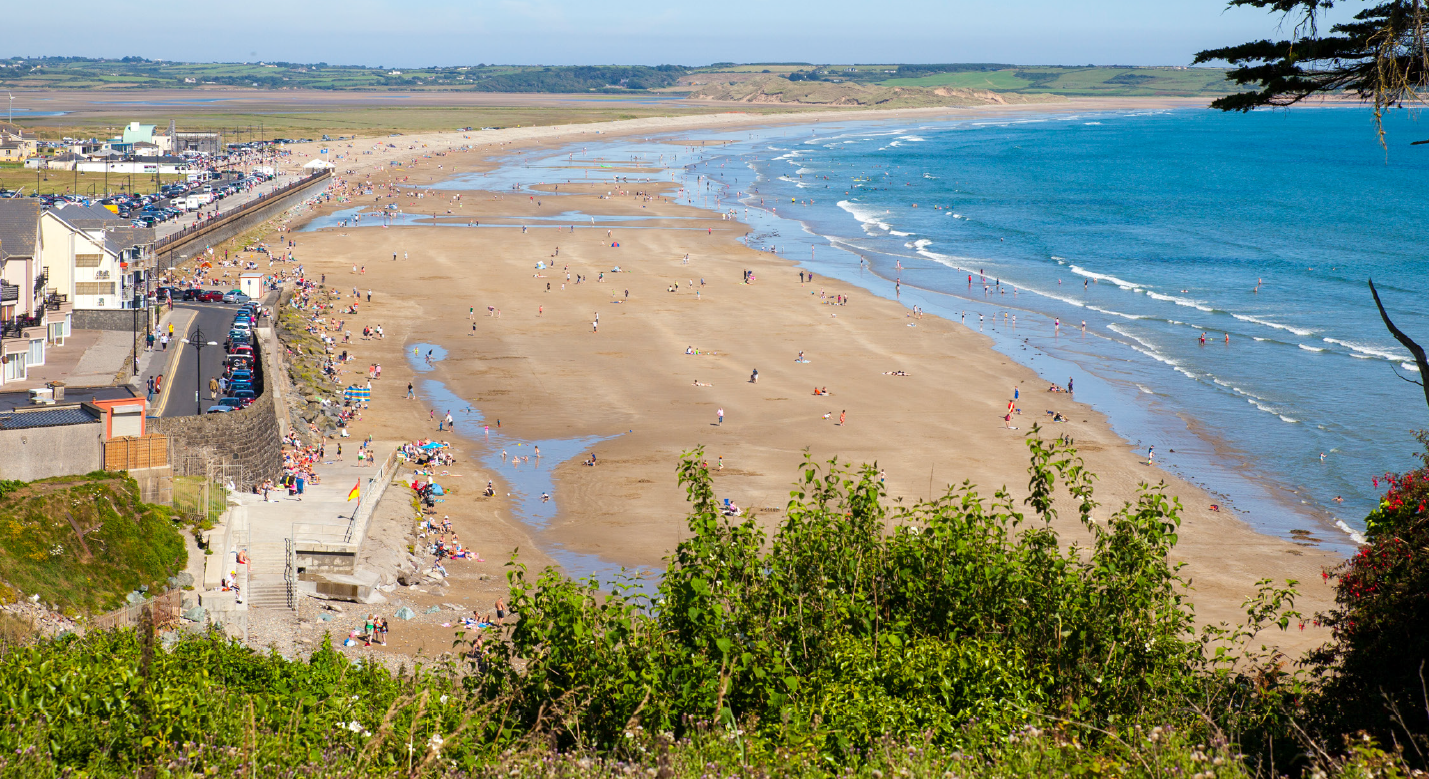
The Council will seek to develop its key flagship tourism projects within the lifespan of the Plan including the North Quays Regeneration Project which has the potential to act as a significant catalyst for both the City and the wider County in terms of economic investment and attractiveness to tourists and will include a new transport hub for Waterford City, the ‘Guardian of the Déise’ which will be a landmark of international standard overlooking Waterford, the further development of the Waterford Experience centred on the Waterford Viking Triangle and Waterford Crystal Visitor Centre, the extension of the Waterford Greenway through the city centre to connect with the New Ross Greenway as well as extending the Greenway to the west of Dungarvan and developing a Waterford to Tramore and a Waterford to Portlaw/Carrick-on-Suir Greenway, the development of the Waterford Cultural Quarter, the development of Blueways along the River Blackwater, River Suir and Waterford Estuary, improved access to the River Suir and Waterford Harbour, to maximise the potential of Waterford as a cruise ship destination , the development of a looped route(s) around County Waterford, the development of a regional scale park within the Waterford Metropolitan Area, the development of Mount Congreve House and Gardens as a major tourist attractor, improved access to the Metal Man in Tramore, Interpretation of Waterford Medieval City Walls, and the development of world class activity facility centres for water-sports in Ardmore and Tramore in association with Failte Ireland.
The tourism objectives of the County Development Plan have been prepared in line with national, regional and local strategies. The Government’s Tourism Policy Statement ‘People, Place and Policy Growing Tourism to 2025’ sets the Government’s primary objectives for tourism i.e., to increase overseas visitors and revenue and the associated employment whilst protecting our natural, built and cultural assets. The ‘Action Plan for Rural Development Realising our Rural Potential (Department of Rural and Community Development 2018) highlights the potential of activity tourism to contribute to economic growth in rural areas.
Waterford has also developed a Tourism Statement of Strategy and Work Plan (2017-2022) which will build on the existing co-operation between the public and private sectors to arrive at a ‘whole- of-sector’ approach to tourism. A unity of purpose between Waterford City & County Council, state agencies, the tourism industry and other stakeholders will result in an overall improvement in tourism performance that will contribute even more significantly to communities throughout Waterford. The Council will continue to support the goals and objectives of this Strategy as well as any updates to the Tourism Strategy that are adopted.
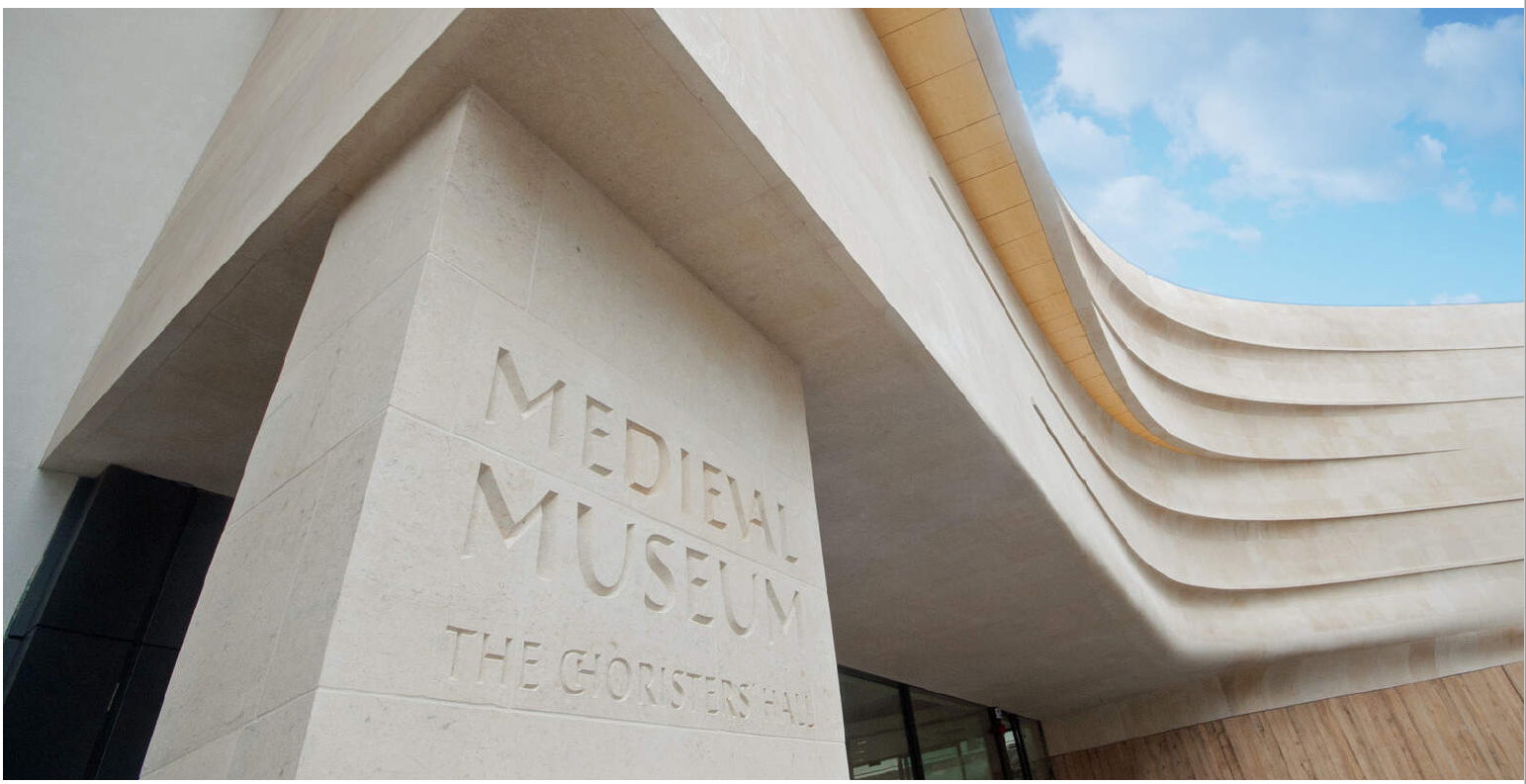
|
Tourism Policy Objectives |
|
|---|---|
|
ECON 22 |
Sustainable Tourism We will cooperate with various stakeholders and tourism agencies to build on the strengths of Waterford City as the regional capital, Dungarvan as a Key Town and County Waterford in their promotion as a tourism destination of choice. To this end, we will facilitate and encourage:
|
|
ECON 23 |
Key Flagship Tourism Projects The Council will seek to develop its key flagship tourism projects within the lifespan of the Plan including:
|
|
ECON 24 |
Tourism Accommodation We will continue to support the development of a variety of accommodation types at appropriate locations throughout Waterford City and County (hotels, B&Bs, Guest Houses, self-catering, caravan & camping, glamping etc), which can improve the economic potential of increased visitor revenue, increase dwell time and meet visitor needs. Tourist accommodation should generally be located within towns and villages (unless otherwise justified to the satisfaction of the Planning Authority) and developed with the principles of universal design to ensure they are accessible for all. |
|
ECON 25 |
Camping/Campervan Sites We will ensure that all camping sites are of a standard which do not adversely impact on environmental and landscape quality and amenity, avoid adverse effects on Natura 2000 sites and build and uphold the reputation of Waterford as a high quality destination for guests from home and abroad. Proposals for camping sites should be consistent with the development management standards of Volume 2 and comply with one of the following:
|
|
ECON 26 |
Tourism Product and Infrastructure In collaboration with landowners, local communities, relevant stakeholders and social enterprise, we will promote, facilitate, encourage investment, and deliver improvements to our tourism product, infrastructure and facilities, including improved car, bus and bicycle parking, walking and cycling trails, directional signage/information boards, and service/rest facilities. Proposals for development shall ensure no adverse impacts on ecological integrity including the Natura 2000 Network. Tourism product developments and infrastructure/ facilities will be subject to normal planning and environmental criteria. The potential environmental effects of a likely increase in tourists/tourism-related traffic volumes in particular locations/along particular routes shall be considered and mitigated as appropriate. Such a consideration should include potential impacts on existing infrastructure (including drinking water, wastewater, waste and transport) resulting from tourism proposals. Any such works shall incorporate and integrate elements of green infrastructure, where appropriate, and be designed in accordance with the principles of universal design. In particular we will continue to advance initiatives such as the INTERREG 'Local Flavours' programme aimed at encouraging, strengthening and delivering investment and improvement to rural economic development and tourism and heritage assets in the following principle (rural cluster) areas and tourism-related initiatives:
|
|
ECON 27 |
Destination Experience Development Plans/ Ireland’s Ancient East
|
|
ECON 28 |
Tourism Strategy To support the development of any update to Waterford’s Tourism Statement of Strategy and Work Plan (2017-2022), and to support the creation of a Strategy for the further development of Greenways, Blueways and Trails in County Waterford incorporating walking, cycling and other activities to support tourism development, and to assist in seeking funding opportunities for their development. |
|
ECON 29 |
Tourism Marketing To support the marketing and promotion of Waterford City and County, as a significant tourism destination, by continuing to work with and develop the Visit Waterford Destination Marketing Group. |
|
ECON 30 |
Tourism Cluster To support the development of a Tourism Cluster in the South-East focused around key tourist sites and attractions in conjunction with adjoining local authorities, Fáilte Ireland, Tourism Ireland and other key stakeholders. |

4.11 Education and Learning City/ Region
Key Economic Goal 6 of the Waterford Local Economic and Community Plan (2015-2020) seeks to “Support pathways to economic participation and opportunity”. Such a goal is founded on a number of factors, including that of an improved quality of human capital and the availability of a skilled workforce. For more than fifty years WIT/ SETU has acted as an important change agent for Waterford city and county and the wider South East, generating intellectual and human capital assets for use by civil society and the economy, and facilitating, moderating and sustaining partnerships in support of positive change with and between various other agents including the state and the private sector.The expansion and enhancement of activity in higher education in Waterford, including that associated with the transformation of WIT through its merger with Institute of Technology, Carlow into the South East Technological University (SETU), represents an opportunity for Waterford to place learning and education to the fore in its future development and also presents opportunities for future schools/campus expansion within the city core by unlocking underutilized sites and/or by developing new schools/campus(es) within the North Quays area. There is also potential for a higher education satellite campus being developed in Dungarvan by partnering with Educational institutes in Ireland and abroad.
Research and consultation as part of this Development Plan process, has also highlighted the need for at least two additional secondary school facilities one in the City and another in the County, as well as a potential need for adaptable resources and facilities around training, upskilling, and lifelong learning/education including in outreach and/ or remote ‘hubs’.

As such, Waterford commits to a policy objective which places ‘Learning’ at its core; by learning from Cork City’s journey as a Learning City[8] and Region, and taking measures to implement these and become a Learning City and County (joining the UNESCO Global Network of Learning Cities (GNLC)). Implementing measures towards ‘building’ a learning city will assist in ensuring that Waterford develops a culture of learning opportunity and support that is intended to lead to socially and economically sustainable communities, and will also support attainment of the Sustainable Development Goals at the local level and achieving aspects of the RSES economic vision and principles.
Expansion of the SETU and other tertiary education and training facilities closer to the city centre, and improved public transport and connectivity, will also assist in generating academic and tourist related investment and spending within a ‘Campus/ Living City’ concept. The Creative Ireland programme and planned development of a creative industries ecosystem in the Waterford Cultural Quarter will support cultural and economic growth including in employment, tourism and Waterford’s status as regional capital of the South East.
|
Education Policy Objectives |
|
|---|---|
|
EDU 01 |
Education Facilities In collaboration with the Department of Education, Coiste Cúram Leanaí - Waterford Childcare Committee, SETU, Waterford and Wexford Education and Training Board and other agencies we will support the provision of education facilities such as childcare, first and second level schools, and tertiary/ lifelong learning across all providers; in so doing, the Development Plan will seek to ensure that an adequate quantity and range of serviced and appropriately zoned land is available for the provision and expansion of education facilities throughout the City and County. While having a flexible approach to the reuse and redevelopment of redundant educational buildings/ facilities and sites for future educational use; we will protect certain sites where this would support the provision or improvement of education facilities and secure the provision of mixed use, compact 10-minute neighbourhoods. Schools and educational facilities should:
|
|
EDU 02 |
South East Technological University (SETU) To support the continued enhancement of the facilities and campus (es)/ consolidation of the SETU, in a manner consistent with the policy objectives of the RSES and MASP. Future developments of university campuses in Waterford should take a “smart campus” approach to design and development. This will include the Cork Road Campus expansion, Waterford Knowledge Campus, the provision of third and fourth level research, unlocking underutilised sites within the city core and/or by developing new schools/campus(es) within the North Quays area,collaboration and course provision in centres throughout the city and county on an outreach/ remote campus basis, such as Nemeton TV – an outreach campus in the Gaeltacht, and supporting the potential for a higher education satellite campus in Dungarvan by partnering with Educational institutes in Ireland and abroad. Development proposals for the SETU should ensure that:
|
|
EDU 03 |
Learning City/ Region To support the development of Waterford as a University and Learning City/ Region through the following measures:
|
4.12 Retail Strategy
The retail sector is a key element of the economy in terms of employment, economic activity and maintaining the vitality of our city and towns. A Retail Strategy (Appendix 4) has been prepared as part of the Development Plan preparation process. The purpose of the retail strategy is to:
- Implement Policy Objective 19a of the MASP and the objectives of the Retail Planning Guidelines, with a key aim being to ensure that Waterford City fulfils its role as the principal retail destination and major economic driver in the County and the South East region, and
- Ensure that the towns of Dungarvan and Tramore continue to play important complimentary and supportive roles within their respective catchment areas.
- Support an appropriate range of retail facilities at a local and rural level throughout the County.
4.12.1 Waterford County Retail
The Council seeks to achieve sustainable urban centres and communities through facilitating multifunctional uses in town and village cores, investment in public realm projects and supporting residential uses back into town and village centres. Our urban centres require regeneration and rejuvenation as well as investment in environmental assets to ensure their resiliency and vitality into the future. The Council will favour development which encourages people, jobs and activity back into and within existing urban centres of all sizes. We will also support the Government’s policy (NPO 16) in relation to addressing vacancy rates in small town and village centres to reduce rural decline and encourage the viability and vibrancy of rural areas.
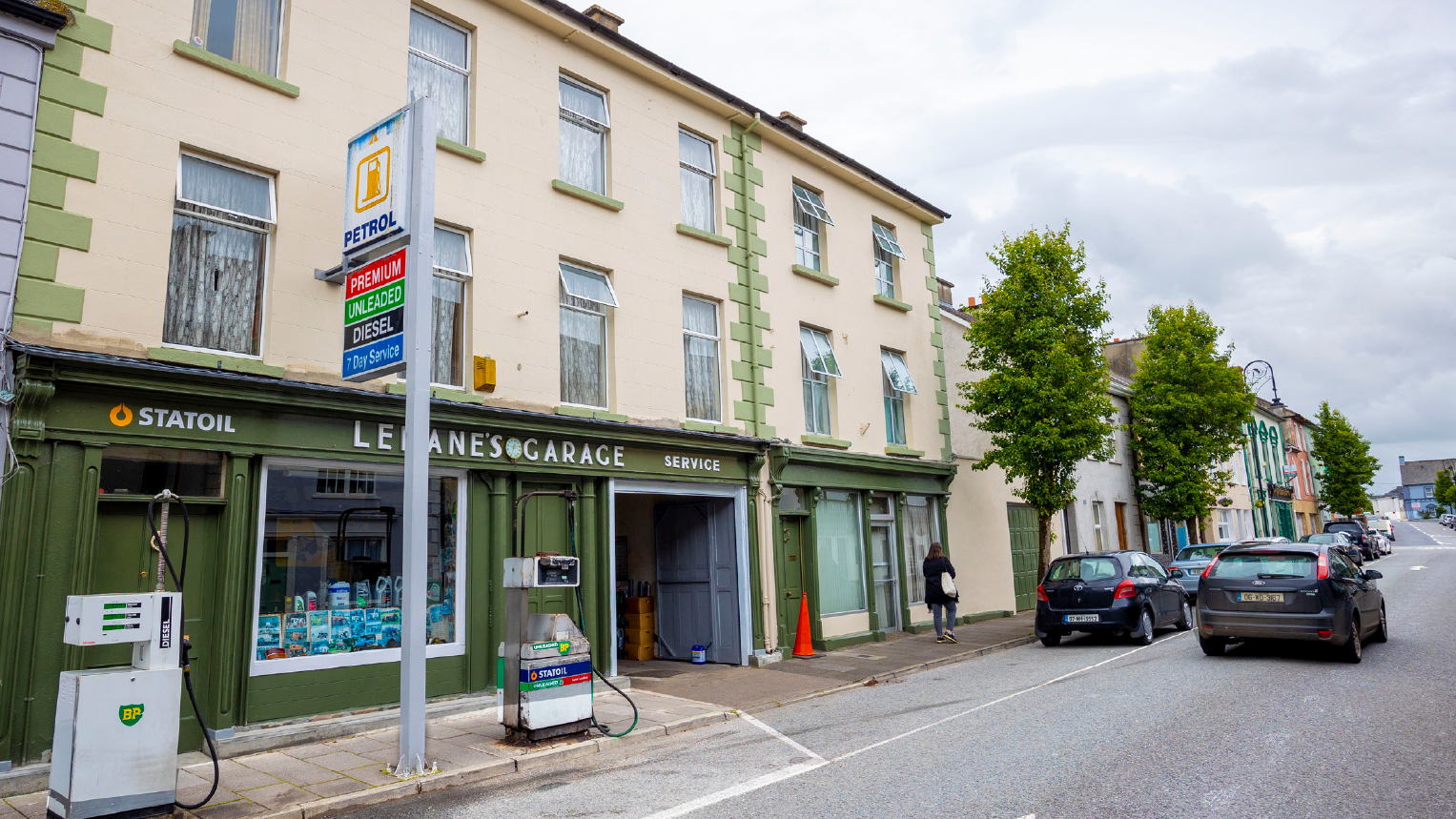
4.12.2 Retail Context
For more detail on Retail Context and below heading please see Waterford City Retail Strategy in Part 2 Chapter 3 and the Retail Strategy Appendix 4.
- Retail Planning Guidelines for Planning Authorities – 2012.
- Retail Design Manual – 2012.
- Waterford City and County Retail Strategy 2020.
- The Retail Hierarchy.
- Assessment of Retail Developments; and
- Covid 19 and Retail
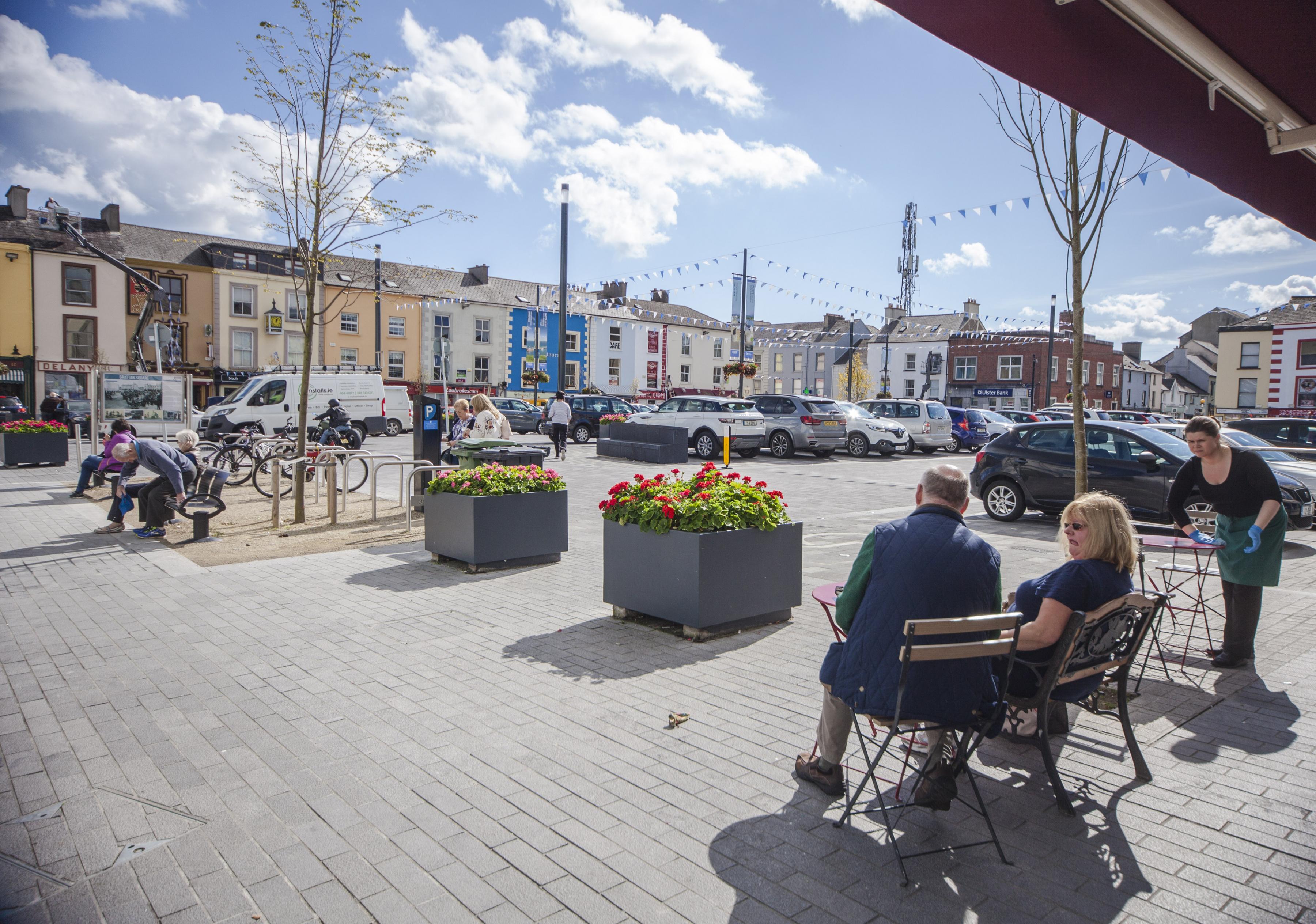
4.12.3 Multifunctional and Flexible Centres
Waterford’s urban centres need to become more resilient and adaptable to change. They must evolve to become a multifunctional and flexible space which, in addition to providing important retail uses, also provides a range of other uses including residential, leisure, recreation, employment, tourism, civic, community, cultural, health and education for the communities they serve. The combination of these uses will assist in further adding to the vibrancy and vitality of existing uses and can help to foster a real sense of place, identity and inclusivity for local residents and visitors alike.
The focus going forward in physical retailing is on what is referred to as ‘experiential’ retail, with a resultant shift from a town/village centre dominated by comparison/convenience retail offer to one where more time is spent on ‘experiences’ such as leisure, culture, heritage, food, beverages and retail services. Traditional economic indicators alone are no longer sufficient to measure the performance of a town in what is now a much more diverse and complex offer. This new departure presents considerable opportunity for Waterford to strengthen our urban centres.
4.12.4 Core Retail Area (CRA)
Waterford City (CRA): Waterford City is dealt with in detail in Part 2 Chapter 3.
Dungarvan Town (CRA): The core retail area of Dungarvan Town is identified on Figure 4.4 and incorporates the following Streets:
- Grattan Square,
- Parnell (Main) Street,
- High Street
- Mary Street.
- O’Connell Street
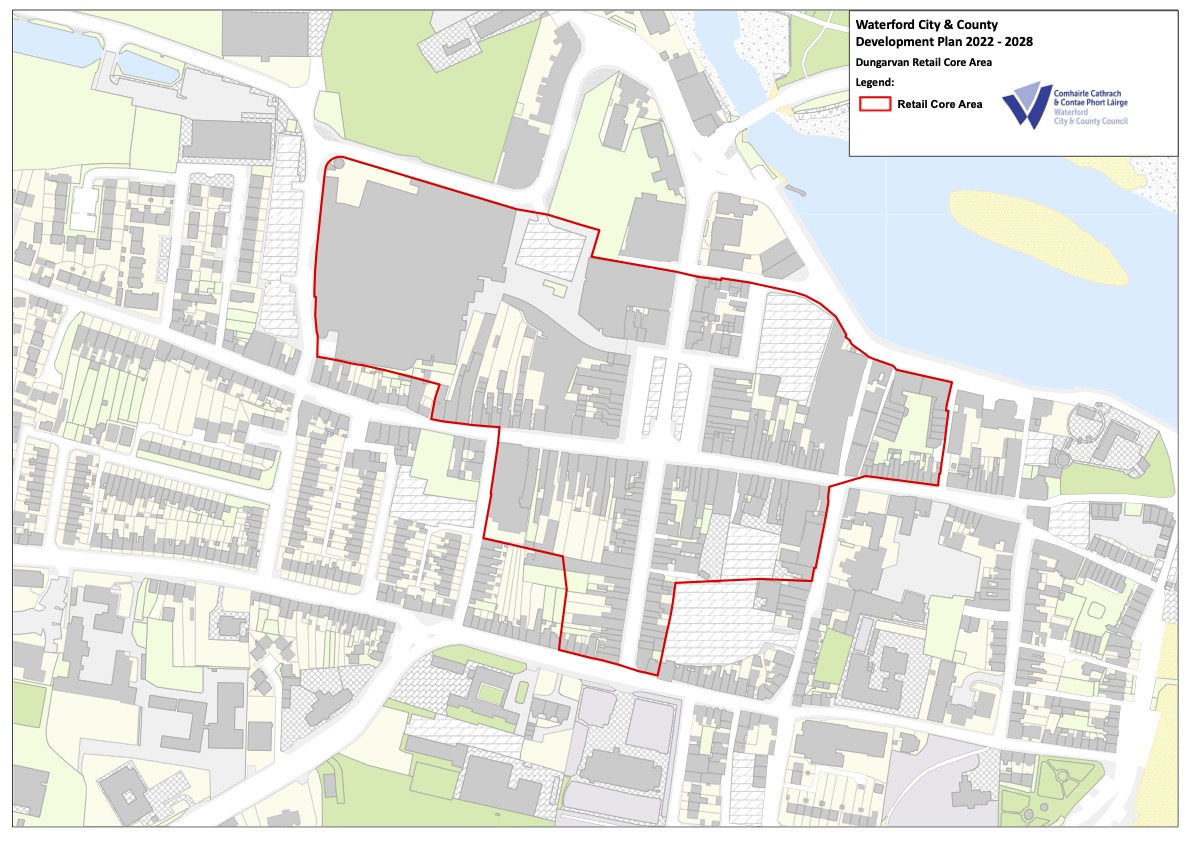
Figure 4.4 Dungarvan Core Retail Area
Tramore Town (CRA)
Tramore does not have a well-defined core retail area, but the main spine (Main Street/Strand Street) from the lower to upper town is important in retail terms. The focus for new retail development should be on lands zoned M2 Town Centre or M5 General Business in the vicinity of the town centre.
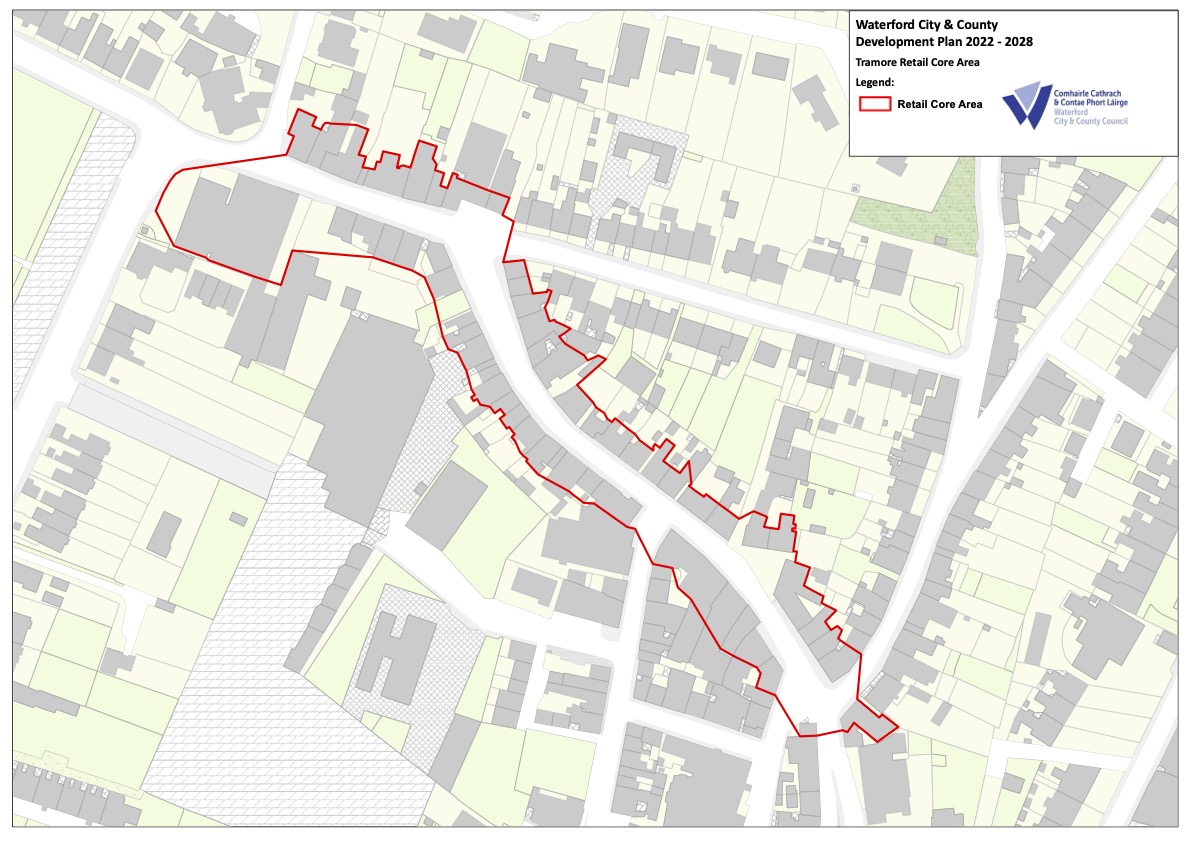
Figure 4.5 Tramore Core Retail Area
Both Dungarvan and Tramore town centres need to maintain and strengthen the retail character of their CRA’s, which can be adversely affected by dead frontage and lower-order retail uses. They also need to become more flexible and multifunctional with regards to their retail function. Both CRA’s already provide a mix of retail and nonretail uses. However, in order to strengthen their retail character, further development of retail frontages will be encouraged within the CRA. Complementary non-retail uses such as a café and restaurants that add to the vibrancy of the CRA and create a mixed use environment to provide for a more integrated shopping and leisure experience, will also be considered favourably but with regard also to the primary retail function of the CRA’s. Applications for other retail service outlets and other uses such as internet residential, cafés, call centres, bookmakers, take-aways, off-licences, amusement arcades, car rental, financial institutions and offices at ground floor level will be assessed on their merits, and may only be permitted where such development would not result in a predominance of such similar non-retail frontages in the CRA.
Other Urban Centres
For Urban Towns, Rural Settlements and Rural Nodes, as listed in the settlement hierarchy, the retail offer does not warrant a Core Retail Area in the same way that is appropriate for Waterford City, Dungarvan and Tramore. However, the focus for new retail development should be on lands zoned M2 Town Centre or M5 General Business or within areas identified as town centre on the settlement maps.
4.12.5 Town Centre First / Sequential Approach
Where the location of a proposed retail development is in an edge‐of‐centre or out‐of‐centre location, a sequential test must be applied in line with the Retail Planning Guidelines.
The order of priority for the sequential approach is to locate retail development in town centre core retail areas, on lands zoned M2/M5 or within areas identified as town centre on settlement maps, and only to allow retail development in edge-of-centre or out-of-centre locations where all other options have been exhausted.
Where retail development in an edge-of-centre site is being proposed, the applicant must demonstrate that there are no sites or potential sites including vacant units within a city centre or within a designated district/suburban centre that are (a) suitable (b) available and (c) viable, can that edge-of-centre site be considered.
4.12.6 Retail Hierarchy and Local Shopping
Retail provision has an important role to play in the creation of vibrant centres and sustainable communities. In the smaller rural centres of the County, the Council will support a positive approach to promoting appropriate retail provision, in keeping with the scale and character of the town/ village in accordance with the Retail Planning Guidelines (2012) and the settlement and retail hierarchy. Table 4.2 provides such examples.
|
Table 4.2 Appropriate Level of Retail Development |
|||
|---|---|---|---|
|
Tier |
Settlement Class & Type |
Settlement |
Appropriate Level of Retail Development |
|
1 |
Regional City |
Waterford City Centre |
Major retail destination within the Region, offering a wide variety of convenience and comparison goods along with an extensive offer of retail, financial and business, leisure services including arts and cultural facilities. Provides a range independent and specialist shops. |
|
2 Level 1 |
Sub Regional |
Dungarvan Town Centre |
Key shopping destination offering a variety of convenience and comparison goods, along with a range of retail and leisure services and some financial and business services |
|
2 Level 2 |
Sub Regional |
Tramore Town Centre Ardkeen/ Farronshoneen Waterford Shopping Centre Lisduggan Tramore Road/ Inner Relief Road, Ferrybank Centre Abbeylands |
Key shopping destination offering a variety of convenience and comparison goods, along with a range of retail and leisure services and some financial and business services |
|
3 |
Urban Towns (>1500 Pop) Large |
Dunmore East Portlaw Lismore Ardmore Kilmacthomas Cappoquin Tallow |
Local shopping destination serving the surrounding hinterland with a limited offer of convenience and comparison goods, and retail and leisure services.
|
|
5 |
Rural Towns (<1500 Pop) Large |
Gaeltacht na nDéise inc Sean Phobal Passage East/ Crooke Stradbally Neighbourhood Centres Waterford City |
|
|
5 |
Rural Villages (<400 Pop) / Local Shops in Waterford City |
Various |
Limited retail offer generally comprising a local convenience store, public house, fuel filling station and post office. |
|
5 |
Rural Nodes |
Various |
|
Retailing in rural areas should generally be directed to existing settlements; development for this purpose in the countryside should be resisted. However, that there may be exceptional circumstances where the development of certain types of retail units in rural areas could be acceptable. The retail units in question could be:
- A retail unit which is ancillary to activities arising from farm diversification.
- A retail unit designed to serve tourist or recreational facilities, and secondary to the main use.
- A small-scale retail unit attached to an existing or approved craft workshop retailing the product direct to the public; and/or,
- A small-scale retail unit designed to serve a dispersed rural community.
4.12.7 Retail Warehousing
The Waterford City and County Retail Strategy highlights that there will be limited demand for further retail warehousing floorspace in Waterford city or county in the short term.
The Retail Planning Guidelines, state that individual retail units should not be less than 700 sq. metres and not more than 6,000 sq. metres in size. These figures are gross floor area, including storage and garden centres. In respect of retail warehouse developments outside town centres, it is essential that the range of goods sold is restricted by planning condition to bulky household items such as DIY products, carpets, furniture, and electrical goods. Failure to do so may have a negative impact on the vitality and viability of the town centre area.
|
Waterford County Retail Policy Objectives |
|
|---|---|
|
Retail 01 |
Retail Guidelines Ensure that all proposed retail development accords with the relevant policies of the Development Plan and the requirements and criteria as established within the Retail Planning Guidelines 2012, the accompanying Retail Design Manual and the Waterford City and County Retail Strategy 2020 (or any subsequent updates). |
|
Retail 02 |
Retail Hierarchy and Urban Centres To promote retail provision in the following location:
The type of retail development should be of an adequate level, type, size, scale and the nature of the floorspace proposed should be appropriate to that centre having regard to the retail hierarchy, the appropriate level of development at each tier of the settlement hierarchy (as set out in Table 3.3) and in the context of the guidance set out in the Retail Planning Guidelines (2012) or any update thereof. Due regard should also be had to the policies, action and vision and the assessment criteria for future retail development as set out in Chapters 7 and 8 respectively of the Retail Strategy (Appendix 4 of the Development Plan). |
|
Retail 03 |
Town Centre First Approach/ Sequential Approach The core retail area/town or village centre will form the main focus and preferred location for new retail development. The Council will apply the sequential approach to retail development proposals outside the core retail area or town/village centre. Edge centre sites or out of town centre sites will only be considered when it has been clearly demonstrated that all suitable available and viable sites in the town core retail area/ town/village centres have been fully investigated and considered in accordance with the Retail Planning Guidelines and in particular the sequential test. |
|
Retail 04 |
Multifunctional Centres To embrace and support the development of Dungarvan and Tramore Town Centres and other urban centres as accessible, multifunctional centres which are of a high quality urban realm and placemaking standard, provide a variety of uses at an adequate and appropriate scale, which facilitate the development of 10 minute communities/neighbourhoods. |
|
Retail 05 |
Retail Warehousing The Council will strictly control additional new retail warehousing/retail park floorspace throughout the County for the duration of the Plan. Any application for retail warehousing will be required to demonstrate that the proposal will not impact adversely on the vitality and viability of established retail centres in accordance with the criteria set down in the Retail Planning Guidelines for Planning Authorities (2012) or any update thereof. |
|
Retail 06 |
Retail Impact To require the submission of Retail Impact Assessment and Traffic and Transport Assessment reports in support of applications for significant retail developments which due to their nature, scale and/or location, may impact on the vitality and viability of Waterford City Centre or any other key/urban town centres as designated in Table 3.3 and Table 4.2 (Tiers 1&2). A Local Retail Health Check Assessment shall be required in support of applications for moderate scaled retail developments in any other urban and rural settlements as designated in Table 3.3 and Table 4.2 (Tiers 3-5). |
[1] (i) Smart Specialisation (ii) Clustering (iii) Capacity Building (iv) Knowledge Diffusion, and (v) Placemaking for Enterprise Development.
[2] Functional economic areas where the ‘boundaries’ reflect patterns of economic activity (e.g. Travel-to-work) rather than administrative areas
[3] €140m investment is planned for the region’s deep seaport – the annual value of goods through the Port has been estimated at €1.7 billion in 2017, with 1,000 jobs directly and indirectly supported. An estimated +4% per annum growth is projected to 2040 - with Belview Waterford Port and Rosslare being the closest Irish ports to mainland Europe,
[4] A National Aviation Policy for Ireland, Department of Transport, Tourism and Sport, August 2015
[5] Typical uses could include those such as defined as examples of farm-based diversification into non-agricultural activities in the CAP Rural Development Programme 2007-2013 (p141).
[6] Home based economic activity is defined as small scale commercial activity carried out by residents of a house which is subordinate or ancillary to the use of the dwelling as a place of residence.
[7] Economic development satisfies the needs of everyone but in a manner that sustains natural resources and the environment for future generations
[8] Cork 2002-2012: Imagine Our Future: Cork City Development Board, 2002